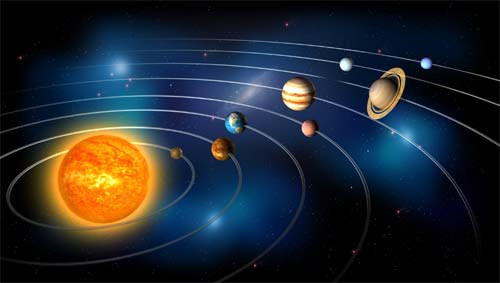heliocentric

Heliocentric is Sun-centered and a heliocentric orbit is an orbit with the Sun at one focus. Heliocentrism is the world-view (obviously now known to be correct) that the Sun is at the central point around which all other bodies revolve.
Heliocentrism was proposed in the 3rd century BC by Greek astronomer Aristarchus of Samos. However, his theory never gained favor because the positions of the stars remained static, which they would not, the logic went, if the Earth were continually changing its position. Claudius Ptolemy offered a solution to this inconsistency in the 2nd century AD, by arguing that the Earth was the center of the solar system. This geocentric model held sway for the next 1,400 years.
In 1543, Nicolaus Copernicus published De Revolutionibus Orbium Coelestium Libri VI (Six Books Concerning the Revolutions of the Heavenly Orbs), which argued in favor of the heliocentric system. Copernicus was a Roman Catholic cleric and he carefully downplayed any heretical overtones in his argument; the volumes remained unpublished until he died and they were prefaced by a disclaimer stating that the theories were useful for computation, even if they proved untrue. As a result his work went largely unnoticed for almost a hundred years.
Galileo Galilei revived the argument for heliocentrism when observations through his telescope suggested the Earth did indeed revolve around the Sun. Galileo's views were deemed heretical, and in 1616 he was forbidden by the Vatican to "hold or defend" his heliocentric model. The Galileo affair, though, had the unforeseen result of spreading the idea of heiocentrism, and it rapidly became accepted as scientific truth.


